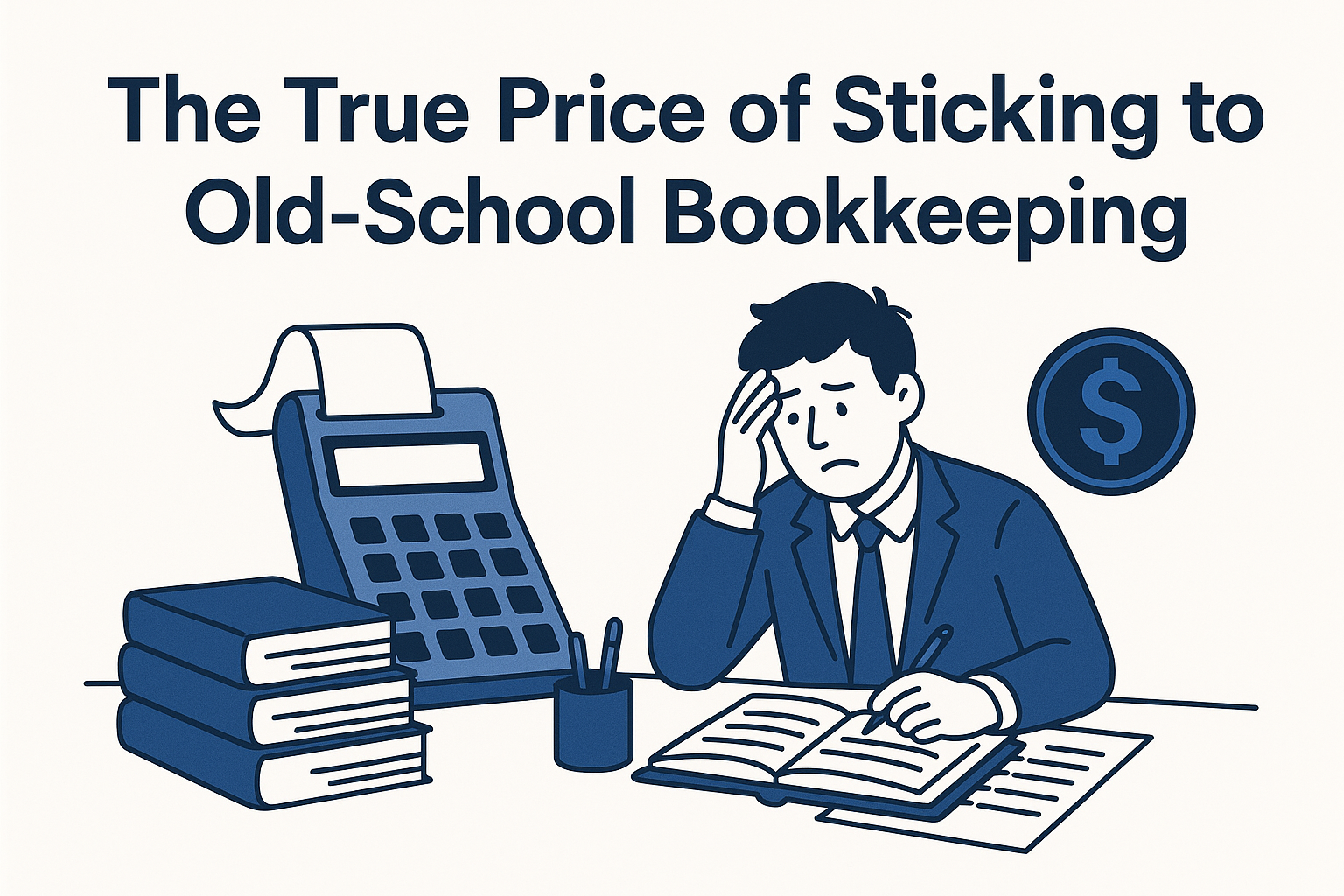
For many small and medium-sized businesses, traditional bookkeeping doesn’t seem like a problem. A stack of receipts, a spreadsheet, and one “finance-savvy” employee — that’s often considered “good enough.”
But have you ever calculated the real cost of this old-school approach?
Think about it: an employee spends 2–3 hours every day sorting invoices, entering numbers manually, and classifying accounts. At the end of the month, they have to cross-check everything, fix errors, and pray nothing got lost.
This means:
In the age of automation, work that used to take hours can now be done in minutes.
Manual bookkeeping isn’t just slow — it’s error-prone. A single misplaced digit can distort an entire report.
The ripple effect is real:
When your books rely on human entry, small errors can snowball into big problems.
Traditional bookkeeping tells you where the money went — but it can’t tell you how to manage it better.
Without real-time insights, business owners often only discover overspending at the end of the month (or worse, at the end of the quarter).
With modern tools like ccMonet, that changes. Businesses can:
It’s not just faster — it’s a smarter way to manage your business.
On the surface, manual bookkeeping looks like it saves you on software fees. In reality, you may be paying for it through:
Running your business on old systems is like driving a rusty truck on the highway — it moves, but it’s inefficient, risky, and costly in the long run.
Digital finance isn’t just for big companies anymore.
With ccMonet, SMEs can:
👉 If you’re still relying on old-school bookkeeping, now is the perfect time to shift gears.
Discover how ccMonet can simplify your finances.